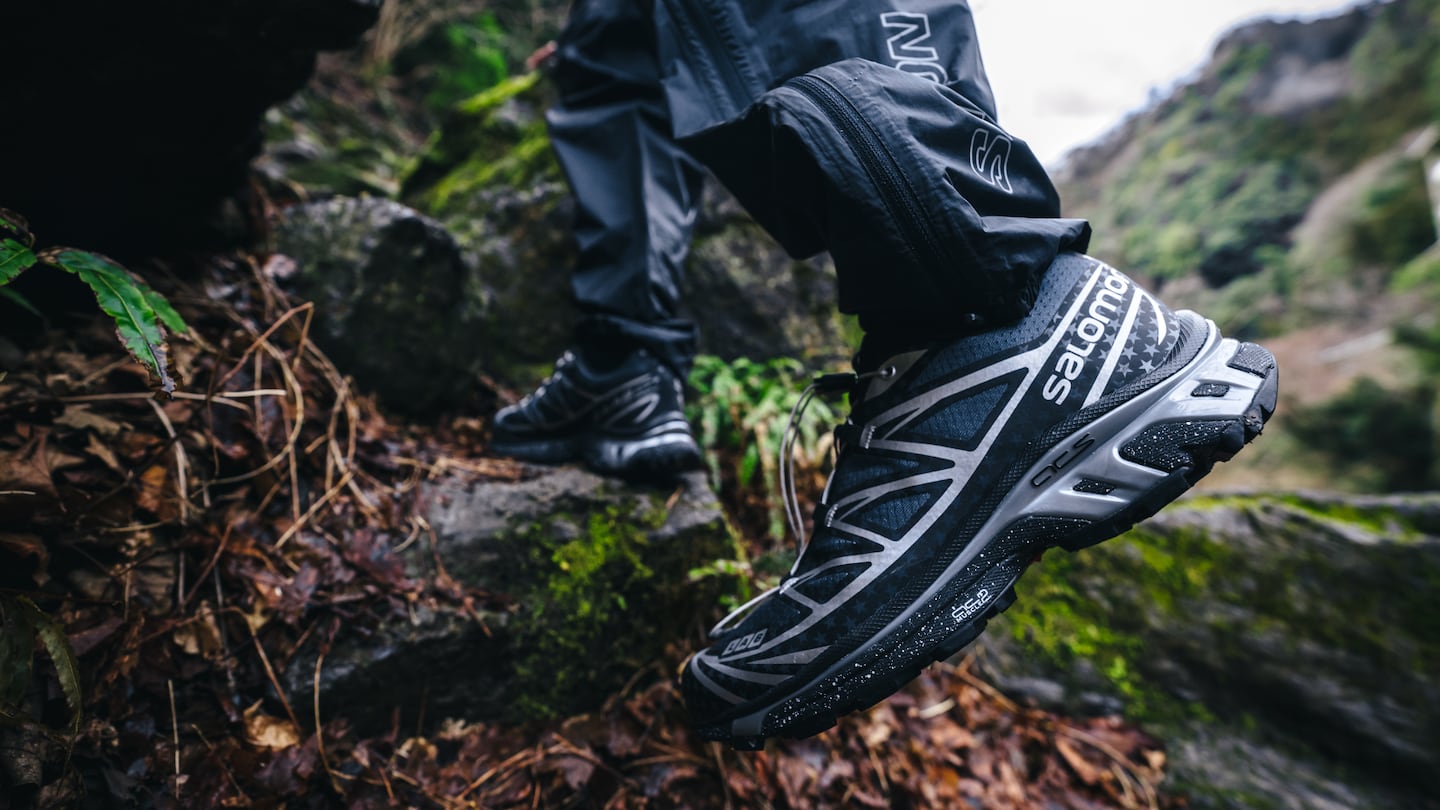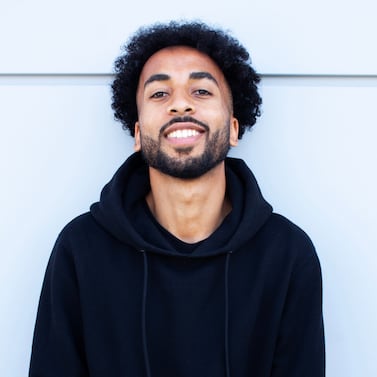
The Business of Fashion
Agenda-setting intelligence, analysis and advice for the global fashion community.

Agenda-setting intelligence, analysis and advice for the global fashion community.

The sneaker resale market is a fast-moving beast.
Just a year ago, Nike’s ubiquitous Dunks would be snapped up as soon as they dropped on the brand’s sneakers app, to be sold on the secondary market for double the price. Then came the rise of the terrace shoe silhouette, led by Adidas’ Samba and Gazelle sneakers.
Today, sportstyle footwear — fashion-forward adaptations of trail, running or hiking shoes — has become the latest category to command eye-watering prices on the secondary market. It was a slow burn to get here: Celebrities, fashion insiders and gorpcore enthusiasts have coveted sportstyle favourites like Salomon’s XT-6 trail sneakers or Asics’ Gel Kayano 14 silhouette since the 2010s when designers began co-opting the aesthetic of niche outdoor sports. Sportstyle entered the mainstream more recently: Hoka and On only became a $1 billion-a-year brands last year.
Now, a quick look at any resale site will tell you this style of footwear is what’s driving hype among sneakerheads. On the US-based platform StockX, the fastest growing sneaker brands so far this year in terms of sales were Swiss-running company On, with trade activity up over 15,000 percent year-on-year, Salomon, up 202 percent, and Asics, up 72 percent.
ADVERTISEMENT
These brands still lag behind Nike, Adidas and New Balance in terms of overall trade volume on the platform — Asics and Salomon are the fifth and sixth top-selling brands, respectively — but are gaining fast thanks to strategies borrowed from their larger competitors and favourable trends such as consumers’ long-term preference for using performance footwear in everyday life, said Drew Haines, StockX merchandising director for sneakers and collectables.
Mainstream consumers are increasingly drawn to sportstyle sneakers for their unique blend of style and performance. Nike Dunks or New Balance 550s are sports-inspired, but a serious athlete probably wouldn’t wear them on the court. Hokas or Salomons designed in vibrant colourways for the fashion crowd, however, are identical to their less-flashy performance line counterparts. All Salomons are produced to withstand the Ultra Trail du Mont Blanc, the legendary, 160-kilometre alpine ultramarathon, the brand’s chief executive Franco Fogliato told BoF in April.
“We love fashion and how it’s allowed us to play around with the design of our products, but we will never compromise performance for fashion,” he said.
While the bulk of Salomon’s sales come from its staple hiking and trail running shoes and ski equipment, its biggest driver of growth comes from fashion enthusiasts and consumers buying its footwear for everyday use. It’s just as likely to see Salomons on the streets of Brooklyn or east London (or, in Rihanna’s case, at the Super Bowl halftime show) as it is in the mountains.
The resale market plays a vital role in allowing regular consumers to get their hands on these products, especially as the most hyped collaborations are often released via niche retailers or through quirky in-person activations.
Salomon’s competitors are seeing similar boosts.
In the quarter ending June 30, Asics sportstyle category grew net sales 51.5 percent year-on-year to ¥28.1 billion ($193 million) while profit was up 72.5 percent. The category is the Japanese sneaker giant’s second most profitable segment behind its core performance line, according to the company’s quarterly earning report. Meanwhile, On’s net sales increased 52.3 percent year-on-year to CHF 444.3 million ($504.8 million) in the first half of 2023.
Experts believe this category of footwear will long outlive more fleeting trends like the chunky dad sneakers, which have been phased out by the fast-moving trend cycle. This is in part thanks to the utility, durability and performance credentials of sportstyle sneakers, which represent good value for money to consumers, whilst looking stylish too.
ADVERTISEMENT
“With their price point and association with high-end brands and retailers, it seems there’s a lane for them to play specifically within high fashion long-term,” said menswear expert and brand consultant Clayton Chambers.
Over the last year, Asics reached peak hype sneaker status after sellout collaborations with cult menswear blog-turned-Instagram mood board jjjjound and breakout Copenhagen womenswear label Cecilie Bahnsen. Pairs of the first iteration of the Bahnsen collaboration, which feature Asics Gel runners adorned with protruding blue flowers, change hands on StockX today at an average sale price of $730, according to the platform (the sneakers initially retailed at $425). Collaborations such as these — along with Asics’ longstanding sportstyle partnership with London-based menswear designer Kiko Kostadinov — has enabled the brand to make its sneaker offering part of luxury consumers’ wardrobes, becoming a fixture at coveted luxury stores like Dover Street Market.
The brand’s mainline sneakers have also become streetwear staples thanks to their interesting history as the status symbol footwear of choice for young men in the banlieues of French cities like Paris and Marseille in the 1990s and 2000s. The footwear’s gritty, urban and nostalgic aesthetic — now appealing to consumers as part of streetwear-inspired, preppy or even tailored outfits — was cemented in popular culture by movies like Mathieu Kassovitz’s ‘La Haine’.
Salomon’s original fashion breakthrough came in 2016 when the brand released its first sneaker collaboration with The Broken Arm, a fashion-forward Parisian boutique. That same year it tapped former Arc’teryx designer Jean-Phillippe Lalonde to head its nascent sportstyle offering, and the brand went on to become a serial fashion collaborator. Its most hyped sneaker so far this year came in May in the form of a sellout tie-up with New York cool girl brand Sandy Liang, releasing a special edition of its XT-6 trail shoe in a pink, black and dark green colourway.
After selling at $175 on the initial release, the sneakers currently trade on StockX at an average price of $400. Sportstyle is now the fastest-growing product category for the brand in terms of sales, Salomon marketing executive Alex van Oostrum told BoF in February.
Lalonde’s work at Salomon didn’t go unnoticed for long. In 2021, Swiss running brand On tapped the designer to oversee their special projects and fashion partnerships, which have since included footwear collaborations with Loewe and technical outerwear brand Post Archive Faction.
The success of sportstyle brands’ collaborations has led to soaring demand on the secondary market for their regular, mainline sneakers, as well as helping the likes of Salomon and Asics to disrupt the monopoly on hype sneakers previously enjoyed by Nike, Jordan and Adidas with its now-terminated Yeezy line, said Haines of StockX.
“Sneakerheads are increasingly seeing brands like Salomon, Asics and On as a way to differentiate themselves,” Haines said. “It’s like they woke up one day realising that they had 30 pairs in their wardrobe, half being Jordans and the other half Yeezys, and thought: ‘it’s about time to shake up the rotation.’”
Designers say fashion’s obsession with technical outerwear like hiking boots and cargo vests may have peaked. Noah’s Brendon Babenzien is the latest to abandon the trend in an upcoming collaboration with Puma.
Rihanna wore Salomon’s “Cross Low” sneakers as part of her all-red ensemble during the halftime performance, marking the culmination of the brand’s recent rise in fashion.

Daniel-Yaw Miller is Senior Editorial Associate at The Business of Fashion. He is based in London and covers menswear, streetwear and sport.
Designer brands including Gucci and Anya Hindmarch have been left millions of pounds out of pocket and some customers will not get refunds after the online fashion site collapsed owing more than £210m last month.
Antitrust enforcers said Tapestry’s acquisition of Capri would raise prices on handbags and accessories in the affordable luxury sector, harming consumers.
As a push to maximise sales of its popular Samba model starts to weigh on its desirability, the German sportswear giant is betting on other retro sneaker styles to tap surging demand for the 1980s ‘Terrace’ look. But fashion cycles come and go, cautions Andrea Felsted.
The rental platform saw its stock soar last week after predicting it would hit a key profitability metric this year. A new marketing push and more robust inventory are the key to unlocking elusive growth, CEO Jenn Hyman tells BoF.